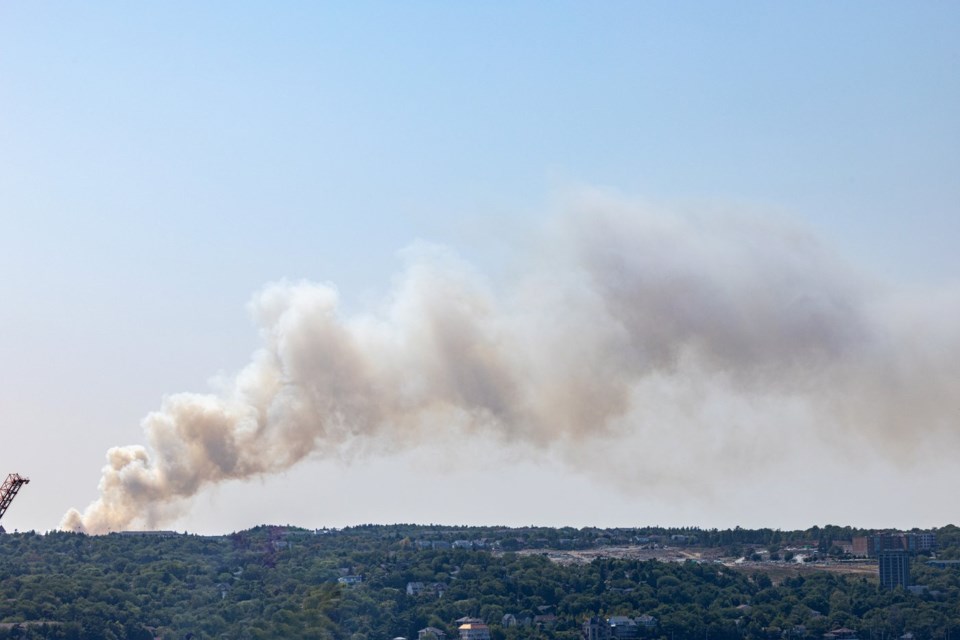HALIFAX — New wildfires across Nova Scotia could be ignited in the days ahead after thunderstorms rolled across the province Thursday night and into the morning, a fire official said Friday.
Forest protection director Jim Rudderham said lightning can penetrate deep into the ground.
"The layers right down through the soil are very dry," he told a virtual briefing. "Lightning has a lot of power. It could drive into the ground and take some time to work its way back out again with fire .... It might take a while to pop up. "
Rudderham said that’s bad news for a province that was already dealing with 11 wildfires on Friday, including one that has been out of control since Wednesday in Annapolis County.
That fire grew from three to four square kilometres in the past two days, forcing the evacuation of about 100 homes in the heavily wooded West Dalhousie area, about 125 kilometres west of Halifax.
Rudderham said that on Thursday, provincial officials asked for help from water bombers in another province, but those aircraft could not make it to Nova Scotia because of the long line of thunderstorms.
The availability of water bombers has been stretched thin because of the ongoing wildfires across Atlantic Canada, he said.
Dave Steeves, a spokesman for the Natural Resources Department, said the helicopters Nova Scotia uses to extinguish fires work well.
"I've been a professional firefighter for over 20 years now and the helicopter resources that we have are extremely effective," he said. "We have a group of very talented pilots."
Rudderham agreed.
"The vast majority of our wildfires are easily contained by the machines we have," he said. "Remember, this is an extreme year where all the agencies are busy right now, but we continue to investigate and look at options to see what's best for us."
While the thunderstorms dumped rain on some areas, it wasn't enough to reduce the risk of more wildfires, Rudderham said.
“We’ll take any kind of moisture," he said. "But it’s very dry out there and it wasn’t enough to help us."
Steeves said milder temperatures and higher humidity was helping firefighters, but “we’re still dealing with a relatively explosive situation.”
This report by The Canadian Press was first published Aug. 15, 2025.
The Canadian Press



